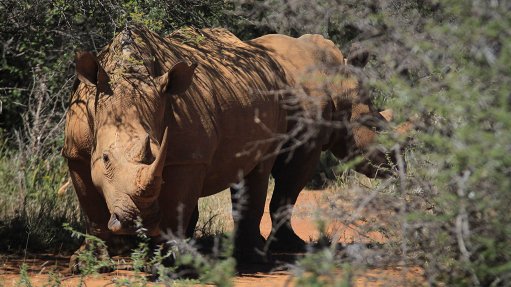
RHINO IN THE BUSH The thermal cameras will enable rangers to detect and stop poachers before they can get close to the rhino
Intelligent-security company Axis Communications donated R300 000 worth of thermal imaging equipment, in April, to detect poaching intrusions to the Thaba Manzi Wildlife Services rhinoceros sanctuary, in Limpopo.
The sanctuary is home to dozens of animals that are either privately owned or were orphaned because of poaching attacks.
The equipment is derived from military systems and specifically calibrated to detect thermal signatures created by humans. It is so sensitive that it can detect heat from recent footprints and penetrates dust, smoke and darkness, says Axis Communications regional business development manager Roy Alves.
“Thermal cameras make it a lot more difficult for criminals to approach their targets, and the Q1931-E camera is engineered to operate intelligently, and a network of thermal cameras provide very good perimeter protection using high-performance video analytics. The cameras can also operate during the day, enabling operators to identify suspect activity at any time and send inspection teams.”
Nonprofit canine security service Pit-Track team leader Carl Thornton praised the cameras, adding that these will complement his team’s ability to stop poachers before they can get close to the rhino.
“The element of surprise is always important and the value of this system is immeasurable. Poachers are audacious and often very organised. Pit-Track was recruited to safeguard the sanctuary after it had several breaches, despite tight security. Now, with the smart thermal cameras to keep watch 24/7, the advantage is taken away from poachers,” he says.
The cameras are equipped with motion sensors to detect movement in its blindspots, and are also tamperproof. Further, the cameras have audio equipment and can intelligently analyse sounds that they detect and send alerts.
“A collection of well-positioned Q1931-E cameras create a digital barrier that is significantly more difficult to avoid than any human observation,” emphasises Alves.
Axis Communications also donated its time, technicians and training to help ensure the sanctuary and Pit-Track can easily operate the equipment.
Rhino Pride Foundation (which supports the sanctuary) founder Dr Jana Fourie says: “We had a lot of incursion attempts before. It is already an expensive and difficult challenge to help the rhino recuperate from attacks, so every effort helps – and these cameras will help a lot.”